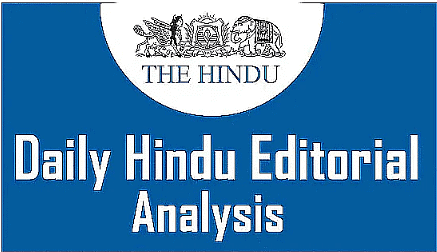UPSC Exam > UPSC Notes > Current Affairs & Hindu Analysis: Daily, Weekly & Monthly > The Hindu Editorial Analysis- 25th May 2023
The Hindu Editorial Analysis- 25th May 2023 | Current Affairs & Hindu Analysis: Daily, Weekly & Monthly - UPSC PDF Download

A ‘middle kingdom’ dawns on India’s west
Why in News?
The Arab League voted to reinstate Syria’s membership after its suspension more than 10 years ago, underlining the thawing relations between Damascus and other Arab countries.
Details
- Syria was ousted from the Arab League in 2011 following President Bashar al-Assad’s brutal crackdown on pro-democracy protests, which led to the ongoing civil war in the country.
- The conflict has since killed around half of a million people and displaced about 23 million.
- The ruling, which allows Assad to attend the upcoming Arab League Summit in Saudi Arabia on May 19, has also called for a resolution of the civil war and the resulting refugee and drug smuggling crises.
Causal factors for reinstation
- The Arab League’s decision is the culmination of Assad’s diplomatic effortsto return to the fold, which gained momentum after this February’s massive earthquake in Turkey and Syria.
- Assad has received a favourable response from several Arab nations like Egypt and Oman not just because they wanted to help the earthquake victims.
- Experts believe these countries have realised they need to end Damascus’ isolation for the stability of West Asia.
- Moreover, they want some sort of repatriation of refugees back into Syria and a curb on the trade of captagon, a highly addictive amphetamine produced in the country.
- The international community outside of the region – Russia aside – has largely washed its hands of responsibility for Syria. There is a vacuum and this is where the regional powers have come in.
- Another catalyst in Syria’s rehabilitation is the China-brokered re-establishment of diplomatic relations between regional powerhouse Saudi Arabia and its archenemy, Iran.
Possible implications
- Given that Western sanctions against Assad’s government remain in place, the return to the Arab League is not expected to lead to a quick release of reconstruction funds in the war-battered country.
- Many experts and regional nations like Kuwait and Jordan, however, fear that the Arab League’s move will set a dangerous precedent.
About The Arab League
- Formally the League of Arab States, it is a regional organization in the Arab world, which is located in Northern Africa, Western Africa, Eastern Africa, and Western Asia.
History
- The Arab League was formed in Cairo on 22 March 1945, initially with six members: Egypt, Iraq, Transjordan, Lebanon, Saudi Arabia, and Syria.
- The official headquarters of the League was the Boustan Palace in Cairo.
- A common market was established in 1965.
Membership
- Currently, the League has 22 members.
- The Charter of the Arab League, also known as the Pact of the League of Arab States, is the founding treaty of the Arab League. Adopted in 1945, it stipulates that "the League of Arab States shall be composed of the independent Arab States that have signed this Pact."
- 22 member states: Algeria, Bahrain, Comoros, Djibouti, Egypt, Iraq, Jordan, Kuwait, Lebanon, Libya, Mauritania, Morocco, Oman, Palestine, Qatar, Saudi Arabia, Somalia, Sudan, Syria, Tunisia, United Arab Emirates and Yemen
- 5 observer states: Armenia, Brazil, Eritrea, India and Venezuela.
Goals
- The League's main goal is to "draw closer the relations between member states and co-ordinate collaboration between them, to safeguard their independence and sovereignty, and to consider in a general way the affairs and interests of the Arab countries".
Working
- Through institutions, notably the Arab League Educational, Cultural and Scientific Organization (ALECSO) and the Economic and Social Council of its Council of Arab Economic Unity (CAEU), the League facilitates political, economic, cultural, scientific, and social programmes designed to promote the interests of the Arab world.
- It has served as a forum for the member states to coordinate policy, arrange studies of and committees as to matters of common concern, settle inter-state disputes and limit conflicts such as the 1958 Lebanon crisis.
- The League has served as a platform for the drafting and conclusion of many landmark documents promoting economic integration. One example is the Joint Arab Economic Action Charter, which outlines the principles for economic activities in the region.
The document The Hindu Editorial Analysis- 25th May 2023 | Current Affairs & Hindu Analysis: Daily, Weekly & Monthly - UPSC is a part of the UPSC Course Current Affairs & Hindu Analysis: Daily, Weekly & Monthly.
All you need of UPSC at this link: UPSC
|
38 videos|5293 docs|1118 tests
|
Related Searches
















